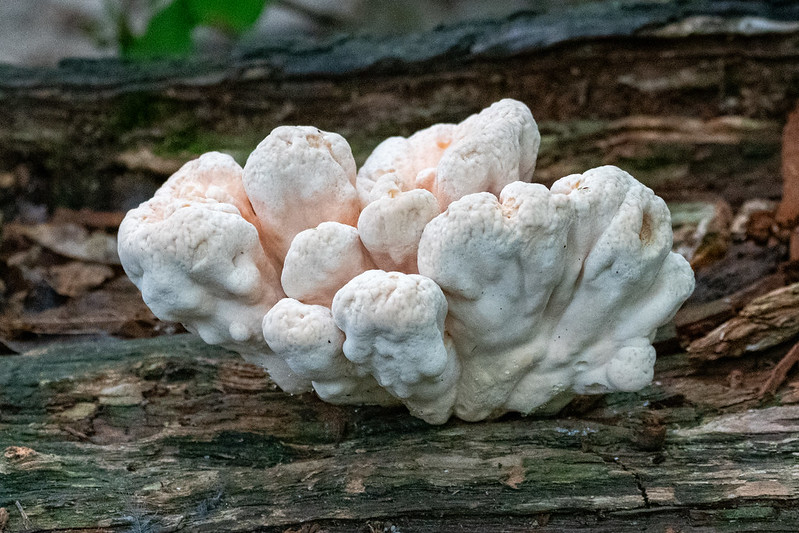Prospect Park, Brooklyn, 22 June and 4 July 2023
Readings
“Some products of the eighties are immortal, I realized the other night, while I was listening to the Pet Shop Boys and thinking about Raymond Carver’s short story ‘Careful.’ ” Here’s my essay for the Paris Review’s Redux newsletter about Carver and PSB, in case you haven’t seen it yet. The link here is kind of makeshift, and I suspect it will only work this week, so go for it now, if you’re interested.
“You need a human to check that the AI is being fed the right type of data and maybe another human who checks its work before passing it to another AI that writes a report, which goes to another human, and so on. ‘AI doesn’t replace work,’ he said. ‘But it does change how work is organized.’ ” —Josh Dzieza on AI in New York magazine
“I arrived here on Friday night from London. I’m staying at the Hotel Artist for $30 a night. Most of the plugs don’t work, so I can’t put my apple juice in the refrigerator. There’s a stool by the window with an ashtray. The shower isn’t bad. The room could use a desk, and the wifi from the router in the hall a floor down is spotty.” —Christian Lorentzen checks in from Tirana, where he has briefly settled as he “walks the earth”
“H. P. Severson (1921) tells of a nest that was placed on a trolley wire; ‘cars passed under this nest every few minutes, their trolley being only a few inches below it. On each occasion the Robin stood up, then settled back on the nest.’ ” —Winsor Marrett Tyler, “Eastern Robin,” in A. C. Bent, Life Histories of North American Thrushes (1949)
“It’s an impressive feat, in its way, to write novels spanning four decades in which style and characterization remain entirely stagnant.” —Claire Lowdon on Richard Ford in The TLS, taking no hostages
“Each written thing a response to a particular stimulus. That may be why you think you’ll never write anything else—because you finished responding to that particular stimulus.” —Lydia Davis, “Selections from Journal, 1996,” in the Paris Review
“Laurence Tribe, the Harvard professor, put an even finer point on it: ‘This wasn’t something that had an organic development in the law. It was, frankly, something that was pulled out of somebody’s butt, because they thought it was a convenient way to fulfill a short-term partisan agenda.’ ” —Andrew Marantz in The New Yorker on the Independent State Legislature Theory, which is the idea that state legislatures can award their Presidential electors to whoever they want, regardless of how their constituents voted
“An engineer at the dam describes a situation so chaotic they didn’t even know if the site of the command center was safe from flooding if the dam failed.” —Christopher Cox in the New York Times Magazine on whether California’s dams are ready for a storm as big as one the state had in 1862
What have you done to deserve this
In connection with my new short story in The Paris Review, I wrote a short essay about Raymond Carver and the Pet Shop Boys for Redux, the Paris Review’s newsletter about revisiting its archives. I believe the newsletter with my essay in it is going to go out this weekend, so if you’d like to read it, sign up for Redux here!
Departures
A novelist visits the Trump Presidential Library
On Thursday, 8 June 2023, the Department of Justice indicted former President Donald Trump on charges of willful retention of national intelligence documents, conspiracy to obstruct justice, and lying to the FBI. On Friday, 9 June, the indictment was unsealed. Like many people curious about American politics, I printed out a PDF of the indictment on Friday night and read it a few times over the weekend. Here’s the DOJ’s own version, which has the photographs in color, if you’d like to read it and haven’t yet.
A lot of pixels have been toggled already over the political and legal ramifications, but I found myself thinking about a different angle: If Trump were a character in a novel, what would the scenes recounted in the indictment say about him? Some are quite vivid.
The genre of the indictment is odyssey: banker’s boxes full of presidential papers take a journey into exile, which ends, for some but far from all of them, in an eventual homecoming back into federal custody. Trump helped to pack the boxes in January 2021. When he left the White House, he had them moved to Mar-a-Lago, his Florida resort. The indictment doesn’t say how many boxes there originally were, but I think I count eighty-one in the photo on page 10 of the indictment, which shows them stacked on the stage of a Mar-a-Lago ballroom (the first four rows seem to be two boxes high, and of these, the front row is eleven boxes across, the second row ten across, the third nine across, and the fourth seven across; at the very back of the stage, there also seems to be one stack of three boxes and another stack of four). According to the indictment, the boxes spent January, February, and March 2021 on the ballroom stage.
Why did Trump take so many papers with him when he left the White House? It seems doubtful he meant to read through them. He doesn’t seem like the sort of person who would want to come to a deeper understanding of the past he had just lived through. “He doesn’t really read anything,” said one of the intelligence officials who struggled to keep Trump informed while he was in office. I suspect that very few of the papers were written by him, or even written on by him, in his childlike black-marker all caps. The best that can be said is that the papers happened to him. Or that they constitute evidence of things that happened to him. In the photo on page 14 of the indictment, where a few of the banker’s boxes have spilled open, what’s visible are front pages of the Washington Times, the Wall Street Journal, and the Financial Times; color print-outs of him speaking to the press on a tarmac; the print-out of a webpage with a headline that reads, in part, “honesty about security clearances” (a nice piece of sortes webiana; it could be this article); and a piece of paper redacted with a long black rectangle at the top that obscures what the DOJ calls “visible classified information.” The last document is the kind that has put Trump in legal jeopardy. According to the indictment, this particular one was labeled “Secret” and “Five Eyes,” was dated 4 October 2019, and was concerned with “military capabilities of a foreign country.” Out of 102 documents labeled Secret, Top Secret, and Confidential that the DOJ seized from Trump, the DOJ has itemized thirty-one that it is charging him with illegally retaining, and the DOJ has assigned this particular document the number 8. In an issue of his newsletter Pwnallthethings, Matt Tait has made educated guesses about the specific contents of the thirty-one documents listed in the indictment, though he hasn’t (yet) made headway with #8.
Maybe Trump thought of the documents as trophies. That could be a powerful motivation for a personality like his. After all, what O. J. Simpson went to prison for, in the end, was not murder but the theft at gunpoint of pieces of memorabilia that he felt belonged to him.
Whatever the nature of Trump’s attachment to these papers, it’s safe to say that people close to Trump saw through it. By April 2021, some of the boxes had been put in Mar-a-Lago’s business center, and on 5 April 2021, according to the indictment, “Trump Employee 1” asked “Trump Employee 2,” believed to be a woman named Molly Michael, if it would be okay to move the boxes out.
“Woah!!” Molly Michael replied, using the internet’s preferred spelling. “Ok so potus specifically asked Walt for those boxes to be in the business center because they are his ‘papers.’ ”
Note the scare quotes. In another exchange later the same day with Trump Employee 1, Michael’s contempt for the “papers” is even more pronounced. When Trump Employee 1 asks if he can put into storage a few things stored in the business center that aren’t paper, Michael replies, “Yes, anything that’s not the beautiful mind paper boxes can definitely go to storage.”
“Beautiful mind paper boxes.” It has been suggested that she is alluding to a scene in the movie A Beautiful Mind in which the hero, a mathematician who has descended into schizophrenia, is revealed to have covered the walls of his study with newspaper clippings and connected them with dark lines while diagramming his conspiracy theories. But I think it’s more likely that she’s using the movie title as shorthand to refer to Trump’s habit of praising his own intellect; he has famously called himself as “a very stable genius” who has “a very good brain.” Michael could be deploying both possible meanings, of course. In any case, she’s not fooled.
I don’t think anyone is ever fooled by Trump. The Dunning-Kruger effect notwithstanding, I think even his ardent supporters know he isn’t literate or well informed about the world, and that his only accomplishments are in the dark sports of bullying, misleading, and emotional manipulation. They like it that he’s mediocre and seethes with grievance about it; that he wasn’t even able to live off an inheritance in a humane, damage-limited way; that despite being given great wealth and opportunity, he has remained small. The better to represent resentment with, my dear. The psychoanalyst Wilfrid Bion wrote about “the hatred of learning by experience,” that is, the wish that people harbor for magical, instant solutions, for shortcuts that bring the rewards of development without any of the tedium and effort that are customarily required: the dream of becoming rich by winning the lottery, of becoming strong by joining an armed militia, of becoming intelligent by having intelligence reports given to you. In Trump, the hatred of learning by experience had an impossible triumph. He wouldn’t mean the same thing if he had become the leader of the free world by working for it.
Trump’s supporters probably like it, therefore, that he doesn’t understand how the documents he collected function in a bureaucracy, and that he is willing and able to use his ignorance to distort the testimony that the documents do offer. For example, on page 15, the DOJ’s indictment quotes from a meeting at Trump’s Bedminster club on 21 July 2021 between Trump, a writer, a publisher, and two Trump staffers, one of whom, believed to be Margo Martin, recorded it. At the time of the meeting, Gen. Mark Milley, formerly chairman of the joint chiefs of staff, had recently told the press that during Trump’s last days in office, he had taken steps to stop any attempt by Trump to start a war. During the interview at Bedminster, Trump brandishes a plan to attack Iran that was prepared by the Defense Department, claiming that the plan was Milley’s and that the document detailing it proves that it was Milley not Trump who flirted with war. “This totally wins my case, you know,” Trump says. In fact, the plan had been drawn up earlier, when the chair of the joint chiefs was Joseph Dunford, and even if it had been produced under Milley’s chairmanship, it’s the responsibility of the Defense Department to draw up such contingency plans—there are almost certainly detailed plans for an invasion of Canada on a hard drive somewhere in the Pentagon at this very moment—and there’s nothing exceptional about the document itself. What’s exceptional is that it ended up in Trump’s hands, because that means that, while Trump was President, he asked to see it. In other words, if the document is evidence of anything, it’s evidence that Milley was right to be anxious that late in his regime, Trump might have been considering war. (This recorded conversation more or less proves the Justice Department’s case against Trump, by the way, because during it, Trump acknowledges that “This is secret information,” acknowledges that “as president I could have declassified it,” and acknowledges that “Now I can’t [declassify it], you know, but this is still a secret.” As the indictment drily comments, “At the time of this exchange, the writer, the publisher, and TRUMP’s two staff members did not have security clearances or any need-to-know any classified information about a plan of attack.”)
Though in this one instance, Trump seems to have tried to use a classified document as a political weapon, the primary meaning of the papers seems to have approached the sentimental. On 24 June 2021, Trump’s valet, Walt Nauta, texted Molly Michael two photos from the Mar-a-Lago storage room, showing banker’s boxes spilling their papers onto the floor. Two texts came from Michael’s phone in reply: “Oh no oh no” and “I’m sorry potus had my phone.”
“Oh no oh no”: an immediate, almost instinctual response. Was the injury inflicted on Trump by the sight of the spilled papers so sharp that he forgot whose phone he was holding? Or maybe he’s just in the habit of casually overwriting the identity of those around him. In the second text, Michael distances herself from the expression of dismay that Trump sent through her phone. She wants it to be clear to Nauta that she, at least, knows it’s not a tragedy if a box neglected in a storeroom has tipped over. Solicitude for things is embarrassing, especially when the things are being used to prop up vanity. Or maybe what’s embarrassing is when vanity so baldly takes a place in the psyche that should be reserved for emotions felt for people. In a text exchange reported on page 23 of the indictment, a “Trump family member,” probably Trump’s wife, Melania, also shows little patience with Trump’s investment in the boxes. “Not sure how many he wants to take on Friday on the plane,” this family member writes on 30 May 2022. “We will NOT have a room for them. Plane will be full with luggage.” The papers are just stuff, to the people around Trump. In a kind of self-defense, his intimates deny the papers have any larger import.
They know he doesn’t understand the papers, that the papers have no meaning for him beyond the greatness he thinks they reflect on him. In January 2022, Trump returned 15 boxes of papers to the National Archives, which, after the archivists found classified material in the boxes, triggered the DOJ’s investigation—and if you’re keeping score, left about 66 boxes in his keeping. Between 23 May 2022 and 2 June 2022, Nauta moved roughly 64 boxes from the Mar-a-Lago storage room to the rooms in Mar-a-Lago where Trump and his family live, at Trump’s request. Then, at around lunchtime on 2 June, Nauta and another employee returned 30 boxes to the storage room, in anticipation of a visit from “Trump attorney 1,” who has been identified as Evan Corcoran, who was arriving that afternoon to look through the boxes for government documents marked as classified, in response to a subpoena from the Department of Justice.
For the DOJ’s purposes, what’s telling here is that 34 boxes were withheld from Corcoran, deliberately and at Trump’s direction, so that Corcoran was never able to inspect them. For an understanding of Trump’s relationship to the papers, however, it’s perhaps also telling that Trump thought he could meaningfully sort through so many boxes in just a few days. Of the 64 boxes brought to Trump before Corcoran’s visit, 50 were brought to him on 30 May, and 11 on 1 June. In less than three days, therefore—and he probably didn’t spend the entirety of any of the three workdays on the task—Trump made a meaningful selection from more than sixty boxes of papers? On what basis? If he had been scanning only for security markings, maybe he could have grabbed most of the papers so marked, but if that had been his goal, why not let Corcoran see everything? No, Trump’s time with the papers was more personal. “I don’t want anybody looking, I don’t want anybody looking through my boxes, I really don’t, I don’t want you looking through my boxes,” Trump told Corcoran, according to Corcoran’s notes. What kind of selection was Trump making? Was he deciding which pages he could bear to surrender? There’s a hint here that he felt some mystical connection to the papers. During an earlier sorting, in January 2022, in advance of Trump’s surrender of fifteen boxes to the National Archives, Nauta seems to have helped Trump with the sorting; toward the end of the process, Nauta had to ask a colleague for “new box covers,” explaining that “They have too much writing on them…I marked too much.” The markings probably had to do with the contents of each box; it’s possible that the markings made it dangerously obvious that Trump and Nauta knew they were playing with classified material. In late May and early June, however, Trump seems to have done his sifting alone. Maybe his work was sped up by his having previously worked through the boxes with Nauta in January. Still, not even a crackerjack professional archivist at the top of his game could process more than sixty banker’s boxes of paper in less than three days. At best what Trump was doing, I suspect, was childish magic. A sorting by touching: one for me, one for them.
The odyssey of Trump’s papers doesn’t come to a neat conclusion. The indictment reports that on 3 June 2022, “NAUTA and others loaded several of TRUMP’s boxes along with other items on aircraft that flew TRUMP and his family north for the summer.” Presumably these boxes contained the papers most precious to Trump. Had these boxes returned south by the time the FBI searched Mar-a-Lago on 8 August 2022? At the time of the raid, Trump was in the New York area. If the precious papers were with him then, they would have escaped the FBI’s trawl. Perhaps they were seized by the FBI in a search of a Trump property in New York or New Jersey that hasn’t yet been reported. But they might still be in his hands.



















